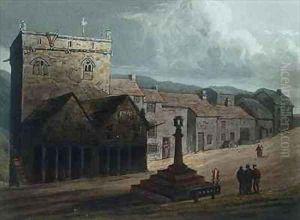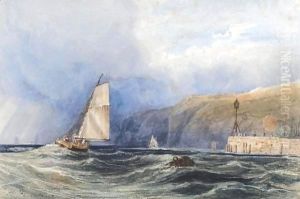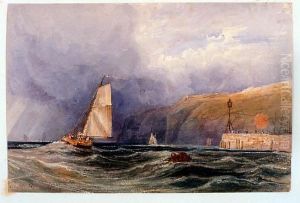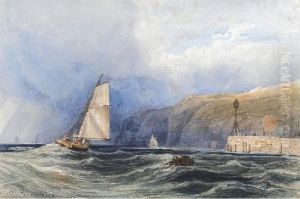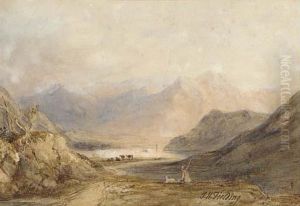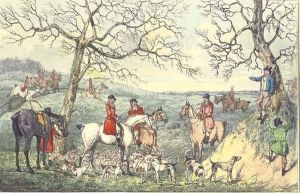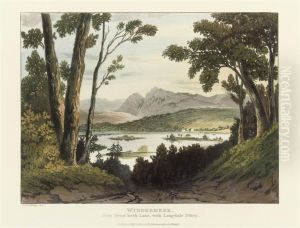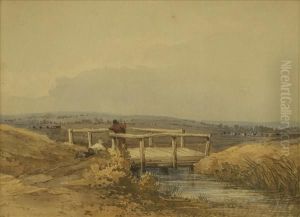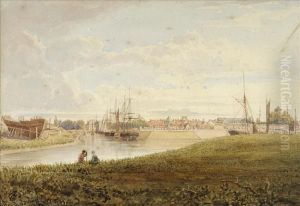Theodore Henry Fielding Paintings
Theodore Henry Fielding was a prominent British artist and engraver renowned for his contributions to landscape painting and aquatint engraving during the 19th century. Born in 1781, Fielding hailed from a family deeply entrenched in the arts; he was the son of Nathan Theodore Fielding, a notable painter and engraver himself. This familial background provided Theodore with an early exposure to the world of art, laying a solid foundation for his future career.
Fielding's artistic journey was marked by his exploration and mastery of aquatint, a medium that allowed for the creation of prints resembling watercolor paintings. This technique was particularly suited to the landscapes and scenic representations that Fielding favored, enabling him to capture the transient effects of light and atmosphere with a delicacy and precision that was unparalleled at the time.
Throughout his career, Theodore Henry Fielding was actively involved in the art community. He contributed significantly to the literature on art, authoring several instructional books on drawing, watercolor painting, and engraving. These publications were well-received and played a crucial role in disseminating the techniques of landscape painting and aquatint engraving to a broader audience, thereby influencing subsequent generations of artists.
Fielding's works were widely exhibited, including at prestigious venues like the Royal Academy. His landscapes, characterized by their fine detail and atmospheric effects, earned him considerable acclaim and were sought after by collectors of the era. Though primarily known for his landscapes, Fielding's artistic repertoire also included architectural subjects and illustrations for books, showcasing his versatility as an artist.
Theodore Henry Fielding passed away in 1851, leaving behind a legacy that had a lasting impact on the British art scene of the 19th century. His contributions to the development of aquatint engraving and landscape painting continue to be celebrated, marking him as a significant figure in the history of British art.
